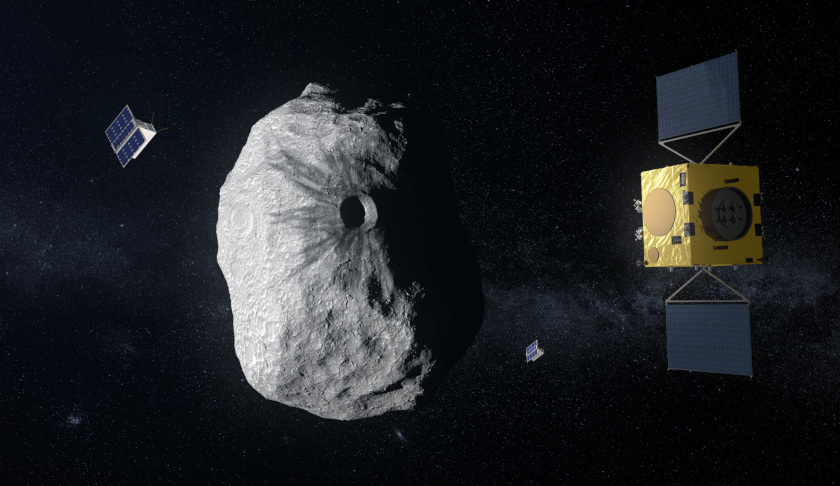The mission will travel to an as-yet undiscovered comet, making a fly-by of the chosen target when it is on the approach to Earth’s orbit. Its three spacecraft will perform simultaneous observations from multiple points around the comet, creating a 3D profile of a ‘dynamically new’ object that contains unprocessed material surviving from the dawn of the solar system.
"Pristine or dynamically new comets are entirely uncharted and make compelling targets for close-range spacecraft exploration to better understand the diversity and evolution of comets," says Günther Hasinger, ESA director of science.
Comet Interceptor is a ‘fast’, or F-class mission. The ‘fast’ refers to the implementation time, with a total development duration from selection to launch readiness of about eight years.
F-class missions, which have a launch mass of less than 1,000 kilograms, will share the ride into space with a medium-class mission, taking advantage of additional space in the launcher and the boost to the Sun-Earth Lagrange point L2, which is 1.5 million kilometres ‘behind’ Earth as viewed from the sun.
Comet Interceptor is foreseen for launch as co-passenger with ESA’s exoplanet-studying Ariel spacecraft in 2028. Both missions will be delivered to L2 and from there Comet Interceptor will journey onwards to the chosen target using its own propulsion system.
The selection process has also been fast. Following a call for missions in July 2018, 23 pitches were submitted by the space science community, with six teams subsequently invited to provide more detailed proposals. Among them, Comet Interceptor was chosen at Wednesday’s Science Programme Committee to move into a more detailed definition phase.
Comet Interceptor comprises three spacecraft. The composite spacecraft will wait at L2 for a suitable target, then travel together before the three modules separate a few weeks prior to intercepting the comet. Each module will be equipped with a complementary science payload, providing different perspectives of the comet’s nucleus and its gas, dust and plasma environment.
Such ‘multi-point’ measurements will greatly improve the 3D information needed to understand the dynamic nature of a pristine comet while it is interacting with the constantly changing solar wind environment.
Previous comet missions, including ESA’s pioneering spacecraft Giotto and Rosetta, encountered short-period comets. These are comets with orbital periods of less than 200 years that have approached the sun many times along their orbits in relatively recent times and as a consequence have undergone significant changes: Rosetta’s comet, 67P/Churyumov-Gerasimenko, orbits the sun once every 6.5 years while Halley's Comet, visited by Giotto and other spacecraft in 1986, returns to our skies every 76 years.
"The huge scientific achievements of Giotto and Rosetta – our legacy missions to comets – are unrivalled, but now it is time to build upon their successes and visit a pristine comet, or be ready for the next ‘Oumuamua-like interstellar object," Hasinger added.
Comet Interceptor is different because it will target a comet visiting the inner solar system for the first time – perhaps from the vast Oort cloud that is thought to surround the outer reaches of the sun’s realm. As such, the comet will contain material that has not undergone much processing since the dawn of the sun and planets. The mission will therefore offer a new insight into the evolution of comets as they migrate inwards from the periphery of the solar system.

